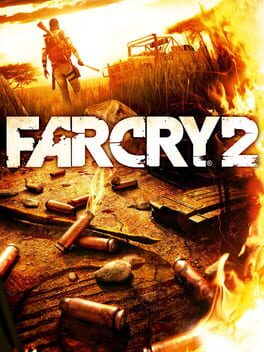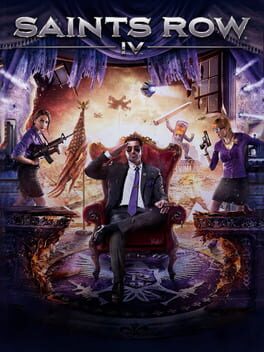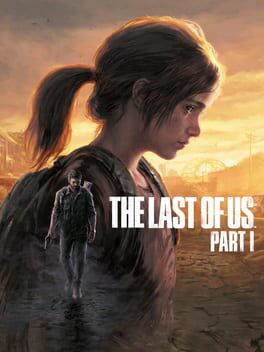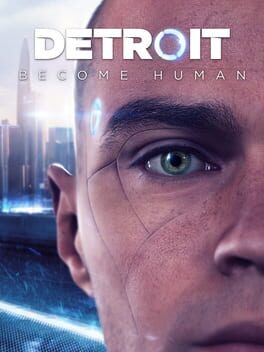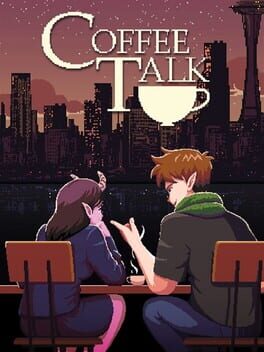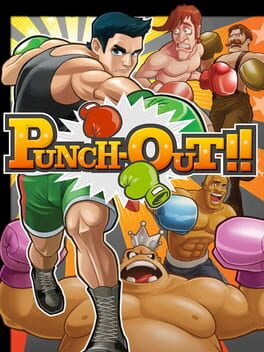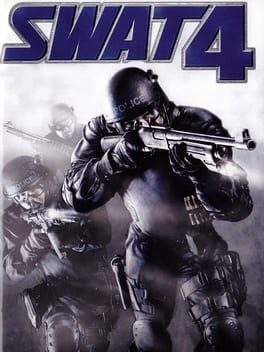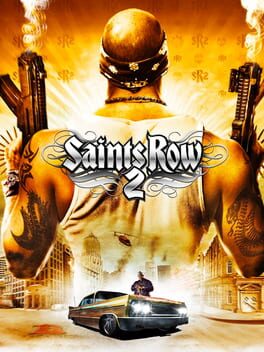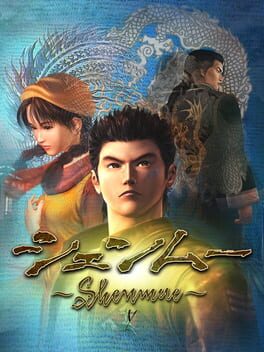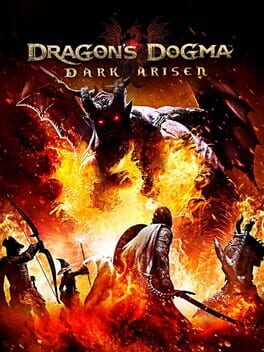DKMarioKart
18 Reviews liked by DKMarioKart
Far Cry 2
2008
Many action stories produced by the modern entertainment industry (especially in the United States) follow a specific narrative “mold” where the main character, an individual from the western “civilized” world, is sent to a poor, “uncivilized” country torn by war. The protagonist's goal is to complete a heroic mission, usually consisting of somehow saving the innocent portion of the population from the savage evildoers (who are depicted as solely responsible for the conflict), acting in the interests of both countries and reaching a satisfying, morally unambiguous conclusion. This, of course, serves as wish fulfillment for the country that holds narrative power over the production, as it provides a comfortable fantasy that would justify their actions in the real world. It may not be directly government-funded propaganda, but it reflects how the citizens from these western countries (again, almost exclusively the United States) see themselves: as necessary saviors of foreign nations. The main character's brutal killings are then framed as heroic acts, essential for the population's liberation. "Sugarcoated" is an understatement. This framing completely sanitizes any involvement from the powerful attacker, painting all of it as heroic altruism, a mission to "introduce democracy to the primitive people". In these narratives, the third world and its instability are objectified, turned into a tool to deliver both entertainment and political reaffirmation.
Far Cry 2 completely rejects this notion and offers, in its place, amoral realism. You start the game with the objective to kill an arms dealer, "the bastard who sells guns to both sides", as the game describes him. However, any pretense of morality is completely discarded less than an hour into the playthrough. After a brief introduction, you begin your journey by doing mercenary work, oftentimes war crimes, for both factions behind the conflict. You are not a hero, there are no good intentions here, you're a foreigner murdering Africans for money. As everyone else involved in this war, you maim and kill for selfish gains. Far cry 2 opts for a realistic depiction of the conflicts that are so sanitized by the entertainment industry at large. It doesn't shy away from recognizing the western presence in these countries, too. Half of your bosses are white and have European or North American origins. All of them show the same degree of disdain towards human life. You'll hear their attempts at morally justifying their actions through a simplified rhetoric: "They brought this on themselves", "Some destruction is necessary for the greater good", etc. It’s a reflection of the modern “imperialist” logic. But there is no justification for cutting off water supplies, killing professors and destroying medicine storages.
The game doesn't explicitly judge your actions, but it presents them without a filter. There isn't a moral bias to exempt your atrocities. It’s clear that you're just a killer, another pawn aiding the continuity of this conflict. What’s unique about Far Cry 2's narrative is that there isn't an active author's voice condemning or congratulating you, things are presented as they are, and you're the one to comprehend the immorality of your actions. However, it isn’t a game without a statement. Several literal elements help paint a clear message. There is a deliberate aura of dread permeating every moment in this experience, effectively enforced through visuals and game design choices, that helps set the tone of utter helplessness in a collapsing society.
The aesthetics of decay and misery are intensely palpable, Far Cry 2’s Africa looks unbearable to inhabit. Outposts are made of metal debris, safehouses are claustrophobic wooden huts, people are dirty and injured. All of this is presented through a dry, overwhelmingly saturated color palette that makes the game uncomfortable to look at (the graphics are quite nice, though).
This visually and narratively decaying world serves as the perfect backdrop to a gameplay loop built to oppress you. Enemies are aggressive, accurate and deal high damage. Guns jam frequently and healing plays a slow animation that locks you in place and cancels itself whenever you’re hit. Outside of the rare safehouses and towns, your safety is never guaranteed, as an enemy vehicle could always be rapidly rushing your position. In my personal experience, I thought the game was a little too forgiving when set to Hardcore difficulty, but too limiting when set to Infamous. While the former allows you to engage in interesting strategies in the middle of a dynamic combat, the latter forces you to find a rock, tree or car, crouch behind it and never leave cover until everyone is dead. That’s boring. I believe Infamous is designed to provide a dynamic and challenging experience to those who are already experienced with the game, which is not my case. A perfect difficulty (for me, at least) would have the higher damage taken and lower ammo count from Infamous with more fragile, less accurate enemies. In this sense, Far Cry 2 doesn’t fully succeed in its oppressive gameplay design. It’s either too easy or too boring. It’d be unfair to call the game unfun, however. Regardless of difficulty, the gameplay is fluid, allowing you multiple approaches to each scenario and providing you with opportunities to plan your actions ahead of time. I found myself making quick, unusual decisions in the middle of combat to maximize safety and resources, such as choosing not to blow up an enemy vehicle so I could steal it later or doing a sudden sideways drift near an enemy outpost in order to use my own car as cover. Your strategies and goals can change in the middle of every encounter, making combat dynamic and entertaining to engage with.
Traversing the environment is often a hassle. No fast travel means you’ll have a map shoved in your face almost every time you’re not shooting people, as if you were playing a very sick, twisted version of Firewatch. The difficulty in traveling is essential for a pure experience, but this aspect could have been implemented with more grace. Two or three additional bus stops scattered around the map would have still made traveling long distances essential (making you vulnerable for long periods of time) while alleviating some of the duller aspects of checking a map every 3 seconds to make sure you’re on the right track. I’m exceptionally awful at spatial localization, though, so that might be a more personal problem.
Your journey is, for the most part, aimless. The story feels static, there is no sense of progression and nothing you do makes any significant difference. Even the ending sequence makes it clear that your efforts came to nothing. It reflects the main character, an emotionless mercenary disconnected from reality who is concerned only with profit and satisfaction. The protagonist serves as a representation of the unthinking player, the type of individual to engage with a game like this from a purely indulgent perspective, fully embracing the role of psychopath murderer assigned to them and never stopping to consider the context surrounding their actions. The main character doesn’t become a villain, he has always operated following the same cynical approach towards existence: It is worth to trade countless human lives in exchange for profit. “I used to be you”, says the Jackal. There are no heroes in Far Cry 2. There are no villains either. Only war remains when you annihilate humanity.
Far Cry 2 completely rejects this notion and offers, in its place, amoral realism. You start the game with the objective to kill an arms dealer, "the bastard who sells guns to both sides", as the game describes him. However, any pretense of morality is completely discarded less than an hour into the playthrough. After a brief introduction, you begin your journey by doing mercenary work, oftentimes war crimes, for both factions behind the conflict. You are not a hero, there are no good intentions here, you're a foreigner murdering Africans for money. As everyone else involved in this war, you maim and kill for selfish gains. Far cry 2 opts for a realistic depiction of the conflicts that are so sanitized by the entertainment industry at large. It doesn't shy away from recognizing the western presence in these countries, too. Half of your bosses are white and have European or North American origins. All of them show the same degree of disdain towards human life. You'll hear their attempts at morally justifying their actions through a simplified rhetoric: "They brought this on themselves", "Some destruction is necessary for the greater good", etc. It’s a reflection of the modern “imperialist” logic. But there is no justification for cutting off water supplies, killing professors and destroying medicine storages.
The game doesn't explicitly judge your actions, but it presents them without a filter. There isn't a moral bias to exempt your atrocities. It’s clear that you're just a killer, another pawn aiding the continuity of this conflict. What’s unique about Far Cry 2's narrative is that there isn't an active author's voice condemning or congratulating you, things are presented as they are, and you're the one to comprehend the immorality of your actions. However, it isn’t a game without a statement. Several literal elements help paint a clear message. There is a deliberate aura of dread permeating every moment in this experience, effectively enforced through visuals and game design choices, that helps set the tone of utter helplessness in a collapsing society.
The aesthetics of decay and misery are intensely palpable, Far Cry 2’s Africa looks unbearable to inhabit. Outposts are made of metal debris, safehouses are claustrophobic wooden huts, people are dirty and injured. All of this is presented through a dry, overwhelmingly saturated color palette that makes the game uncomfortable to look at (the graphics are quite nice, though).
This visually and narratively decaying world serves as the perfect backdrop to a gameplay loop built to oppress you. Enemies are aggressive, accurate and deal high damage. Guns jam frequently and healing plays a slow animation that locks you in place and cancels itself whenever you’re hit. Outside of the rare safehouses and towns, your safety is never guaranteed, as an enemy vehicle could always be rapidly rushing your position. In my personal experience, I thought the game was a little too forgiving when set to Hardcore difficulty, but too limiting when set to Infamous. While the former allows you to engage in interesting strategies in the middle of a dynamic combat, the latter forces you to find a rock, tree or car, crouch behind it and never leave cover until everyone is dead. That’s boring. I believe Infamous is designed to provide a dynamic and challenging experience to those who are already experienced with the game, which is not my case. A perfect difficulty (for me, at least) would have the higher damage taken and lower ammo count from Infamous with more fragile, less accurate enemies. In this sense, Far Cry 2 doesn’t fully succeed in its oppressive gameplay design. It’s either too easy or too boring. It’d be unfair to call the game unfun, however. Regardless of difficulty, the gameplay is fluid, allowing you multiple approaches to each scenario and providing you with opportunities to plan your actions ahead of time. I found myself making quick, unusual decisions in the middle of combat to maximize safety and resources, such as choosing not to blow up an enemy vehicle so I could steal it later or doing a sudden sideways drift near an enemy outpost in order to use my own car as cover. Your strategies and goals can change in the middle of every encounter, making combat dynamic and entertaining to engage with.
Traversing the environment is often a hassle. No fast travel means you’ll have a map shoved in your face almost every time you’re not shooting people, as if you were playing a very sick, twisted version of Firewatch. The difficulty in traveling is essential for a pure experience, but this aspect could have been implemented with more grace. Two or three additional bus stops scattered around the map would have still made traveling long distances essential (making you vulnerable for long periods of time) while alleviating some of the duller aspects of checking a map every 3 seconds to make sure you’re on the right track. I’m exceptionally awful at spatial localization, though, so that might be a more personal problem.
Your journey is, for the most part, aimless. The story feels static, there is no sense of progression and nothing you do makes any significant difference. Even the ending sequence makes it clear that your efforts came to nothing. It reflects the main character, an emotionless mercenary disconnected from reality who is concerned only with profit and satisfaction. The protagonist serves as a representation of the unthinking player, the type of individual to engage with a game like this from a purely indulgent perspective, fully embracing the role of psychopath murderer assigned to them and never stopping to consider the context surrounding their actions. The main character doesn’t become a villain, he has always operated following the same cynical approach towards existence: It is worth to trade countless human lives in exchange for profit. “I used to be you”, says the Jackal. There are no heroes in Far Cry 2. There are no villains either. Only war remains when you annihilate humanity.
Saints Row IV
2013
Drakengard
2003
Coffee Talk
2020
" What if I made a fantasy world where all fantasy races lived in peace "
Me: 🙂🙂🙂
" And then you had a comfy coffee shop with a diverse cast of costumers "
Me: 😄😄😄
" But the world was filled with prejudice and xenophobia "
Me: 😓😓😓
" And they used memes to describe structural racism "
Me: 😞😞😞
" And orcs are like... black people! "
Me: 😔😔😔
Me: 🙂🙂🙂
" And then you had a comfy coffee shop with a diverse cast of costumers "
Me: 😄😄😄
" But the world was filled with prejudice and xenophobia "
Me: 😓😓😓
" And they used memes to describe structural racism "
Me: 😞😞😞
" And orcs are like... black people! "
Me: 😔😔😔
Punch-Out!!
2009
SWAT 4
2005
Saints Row 2
2008
Shenmue
1999
“Years ago, I was Chinese”
It’s universally true that every American has dreamt of being an autistic Japanese dock worker. Now, you can make that dream come true!
On a serious note, Majora’s Mask was the perfect primer for me to get into Shenmue. This famously immersive Dreamcast epic/Virtua Fighter RPG is beyond ambitious, and it’s proof that game design going deep can be way better than going wide.
It’s the wonderfully aimless predecessor to games like LA Noire and Yakuza. It’s part mystery, part fighting game, part life-sim, but honestly with none of the headache that comes with any of them. You don’t have to bathe or comb your hair like in Red Dead Redemption 2, and there’s no real hurry to finish the campaign, so you can play darts and Space Harrier to your heart’s content.
Some call it boring, but I found Shenmue to be a soothing, fulfilling experience. It makes me sad that we don’t see tons of games like it nowadays. Companies have gone for these expansive/empty open worlds for so long that aside from a few (including aforementioned games) we’ve missed out on a level of granular detail that they were able to achieve on the Sega Dreamcast. Plus you can carry over your save file Mass Effect-style to the next game! Insane!
We need more games like Shenmue.
It’s universally true that every American has dreamt of being an autistic Japanese dock worker. Now, you can make that dream come true!
On a serious note, Majora’s Mask was the perfect primer for me to get into Shenmue. This famously immersive Dreamcast epic/Virtua Fighter RPG is beyond ambitious, and it’s proof that game design going deep can be way better than going wide.
It’s the wonderfully aimless predecessor to games like LA Noire and Yakuza. It’s part mystery, part fighting game, part life-sim, but honestly with none of the headache that comes with any of them. You don’t have to bathe or comb your hair like in Red Dead Redemption 2, and there’s no real hurry to finish the campaign, so you can play darts and Space Harrier to your heart’s content.
Some call it boring, but I found Shenmue to be a soothing, fulfilling experience. It makes me sad that we don’t see tons of games like it nowadays. Companies have gone for these expansive/empty open worlds for so long that aside from a few (including aforementioned games) we’ve missed out on a level of granular detail that they were able to achieve on the Sega Dreamcast. Plus you can carry over your save file Mass Effect-style to the next game! Insane!
We need more games like Shenmue.
Since time immemorial, through the foggy shroud of that unknown place we call the past, since man first airbrushed Gandalf smoking a pipe on the side of a van, there has been, floating in the aetheric vapor of the noosphere, a dimly illuminated dream, The Dream, pinpricks of the sublime in the collective mind of humanity. Some have glimpsed a piece of this dream- The Legend of Zelda, The Elder Scrolls, Ultima, Dark Souls, Adventure, Dragon Quest, King's Field, Wizardry, and countless others, but each in turn have failed to capture The Dream. Perhaps they could not escape their worldly fetters and feared the purity and power of The Dream, perhaps they, like in the parable of the Blind Men and the Elephant, only beheld some small part of The Dream, perhaps they greedily sought to pass off The Dream as their own. Whatever the case may be, the results have always been, like Conrad Gessner's illustration of the Cameleopard, a grotesque, a parody, and an imitation. Dragon's Dogma is The Dream, carved in the fullest relief yet, and lit by warm radiance, it is not artistically generic- it is pure, it is not unfinished- it is too great to exist in totality on this fallen Earth, it is videogames: fulfilled, it is proof that the creative endeavors of humankind are not wasted, it is the twinkle in the eye of Gandalf smoking a pipe airbrushed on the side of a van.
Saints Row 2
2008
I am fully aware how ridiculous this may sound, but I am being 100% serious when I tell you that this game's cutscenes, seemingly driven mostly by "hm, what would look the coolest here?", are better—and more thoughtfully—shot and edited than most other games I've played.
"But what about [prestige game]" especially better than that.
Despite the average shot length being too short for my taste, the cutscene where the Ronin attempt to ambush Johnny Gat and the player was when I realized "oh, someone DIRECTED this." Beyond the flashier stuff like the derivative-but-still-great katana flower-cutting discretion shot, there's a real sense of rhythm to the scene and thoughtfulness to the blocking (to say nothing of the physical comedy) that persists across all the other story cutscenes, once I started paying attention.
(Of particular note is the long take late in the Brotherhood arc, which I bring up not because long takes are inherently good or something—they're frequently misused pretentiously by people who don't understand what they're for—but because it's specifically there to create a vulnerable, scrambling feeling that underlines both the larger theme of the arc of powerful people feeling powerless and lashing out in petty destructive ways, and the immediate theme of Maero Is Bigger And Stronger Than Me Oh No.)
The fact that these cutscenes come out of an era in gaming that was still pretty dominated by "just vaguely point the camera at the action" is nuts.
Oh also the rest of the game's alright. It's extremely 2008 in good and bad ways. It's better than the HD GTAs by a country mile. It's hard for me not to compare its controls negatively to its sequel, since I played it first—jumping on cars to get in them without the animation is a salve, but doesn't compare to jumping directly into the driver's seat in SRTT—but obviously the tradeoff is that Stilwater is a better sandbox than Steelport.
(p.s. the female player character is sorta-canonically trans, which is fun)
"But what about [prestige game]" especially better than that.
Despite the average shot length being too short for my taste, the cutscene where the Ronin attempt to ambush Johnny Gat and the player was when I realized "oh, someone DIRECTED this." Beyond the flashier stuff like the derivative-but-still-great katana flower-cutting discretion shot, there's a real sense of rhythm to the scene and thoughtfulness to the blocking (to say nothing of the physical comedy) that persists across all the other story cutscenes, once I started paying attention.
(Of particular note is the long take late in the Brotherhood arc, which I bring up not because long takes are inherently good or something—they're frequently misused pretentiously by people who don't understand what they're for—but because it's specifically there to create a vulnerable, scrambling feeling that underlines both the larger theme of the arc of powerful people feeling powerless and lashing out in petty destructive ways, and the immediate theme of Maero Is Bigger And Stronger Than Me Oh No.)
The fact that these cutscenes come out of an era in gaming that was still pretty dominated by "just vaguely point the camera at the action" is nuts.
Oh also the rest of the game's alright. It's extremely 2008 in good and bad ways. It's better than the HD GTAs by a country mile. It's hard for me not to compare its controls negatively to its sequel, since I played it first—jumping on cars to get in them without the animation is a salve, but doesn't compare to jumping directly into the driver's seat in SRTT—but obviously the tradeoff is that Stilwater is a better sandbox than Steelport.
(p.s. the female player character is sorta-canonically trans, which is fun)
Fallout: New Vegas
2010
In twenty or thirty years, if the world's still around by then, I strongly suspect that Bethesda RPGs will exist in that particular space where those of us who lived through them insist to a skeptical audience of video game history enthusiasts how important they were. "You have to understand," we'll say, "I know they're unbelievably glitchy and they play like a bicycle with hexagonal wheels, but these were huge. EVERYONE played these." For all their flaws, these games defined a particular ideal of gaming experience not so much by what they were as by what they aspired (and inevitably failed) to be.
Of course, New Vegas isn't a Bethesda game. It was developed by Obsidian Entertainment and it has a distinctly different design sensibility. At the same time, it clearly is a Bethesda game: the expectations created by Fallout 3 and the constraints imposed by the engine itself make the moment-to-moment experience of playing much more alike its siblings than it is different. And so it exists in the liminal space of the cover artist, stuck with a song but still given the freedom to put their own spin on it.
New Vegas's spin is grand political struggle. Although other Bethesda games have their obligatory world-altering main quests, none extend so deeply through the vast game world or make it seem so much like a real place where real people are struggling with and against one another to make the best of a bad situation. The way it seeks to breathe life into the Mojave Wasteland is the heart of what sets New Vegas apart. Proper Bethesda games grasp desperately at an ideal of "realism" defined by interactive stuff: in the real world you go anywhere, talk to anyone, and touch anything you see, so the most realistic games must be huge maps littered with stuff you can pick up and people who will talk to you about arrows and knees.
My friend Bret and I call this approach "lumpy realism", after the mountain of discrete objects it engenders. And while New Vegas is beholden to lumpiness, it's mostly a trapping of its ancestry. It's more interested in what I'll call "decisive realism", the promise that the choices you make as a player matter in some deep sense. This is still an ideal whose shortcomings will always show the seams of artificiality, but it's also one that makes space for writing and plotting, the unsung heroes of the RPG genre.
For my money though, the most interesting thing about New Vegas is less what it tries to do and more the negative space left behind by what it doesn't try to do. Because it's less interested in leaving interactive stuff all over the place (and possibly because of development time constraints), it has a number of places that just exist. They're not part of a quest, they don't have lore, they're not meaningfully interactive in any way. They're just spaces and models and textures that exist for you to be near and look at. That's a sort of realism too, even if it's not intentional. After all, even though I could interact with anything in the world, in reality, I usually choose to just take it in.
Of course, New Vegas isn't a Bethesda game. It was developed by Obsidian Entertainment and it has a distinctly different design sensibility. At the same time, it clearly is a Bethesda game: the expectations created by Fallout 3 and the constraints imposed by the engine itself make the moment-to-moment experience of playing much more alike its siblings than it is different. And so it exists in the liminal space of the cover artist, stuck with a song but still given the freedom to put their own spin on it.
New Vegas's spin is grand political struggle. Although other Bethesda games have their obligatory world-altering main quests, none extend so deeply through the vast game world or make it seem so much like a real place where real people are struggling with and against one another to make the best of a bad situation. The way it seeks to breathe life into the Mojave Wasteland is the heart of what sets New Vegas apart. Proper Bethesda games grasp desperately at an ideal of "realism" defined by interactive stuff: in the real world you go anywhere, talk to anyone, and touch anything you see, so the most realistic games must be huge maps littered with stuff you can pick up and people who will talk to you about arrows and knees.
My friend Bret and I call this approach "lumpy realism", after the mountain of discrete objects it engenders. And while New Vegas is beholden to lumpiness, it's mostly a trapping of its ancestry. It's more interested in what I'll call "decisive realism", the promise that the choices you make as a player matter in some deep sense. This is still an ideal whose shortcomings will always show the seams of artificiality, but it's also one that makes space for writing and plotting, the unsung heroes of the RPG genre.
For my money though, the most interesting thing about New Vegas is less what it tries to do and more the negative space left behind by what it doesn't try to do. Because it's less interested in leaving interactive stuff all over the place (and possibly because of development time constraints), it has a number of places that just exist. They're not part of a quest, they don't have lore, they're not meaningfully interactive in any way. They're just spaces and models and textures that exist for you to be near and look at. That's a sort of realism too, even if it's not intentional. After all, even though I could interact with anything in the world, in reality, I usually choose to just take it in.
